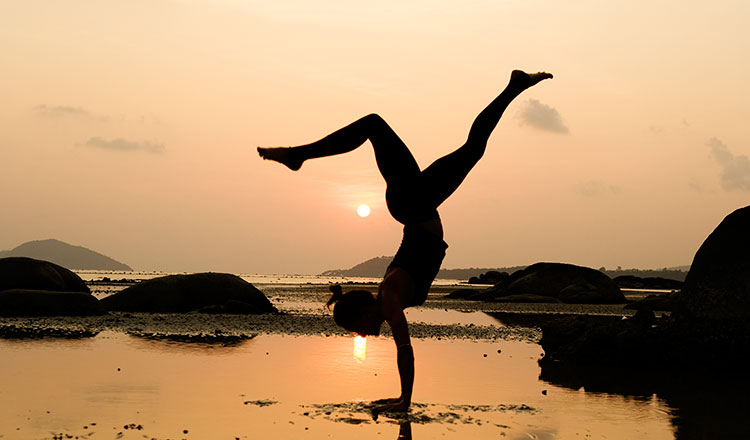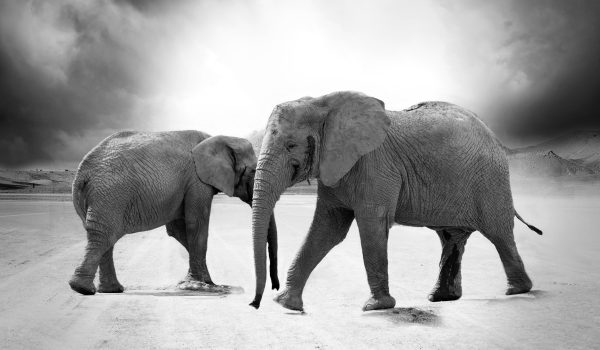John and Karina Stewart founded Kamalaya Wellness Sanctuary and Holistic Spa Resort, Koh Samui Thailand in 2005.
Since then Kamalaya has won more than 35 industry and consumer awards since its inception, including most recently Worldwide Health & Wellness Destination of the Year 2022 at the World Spa & World Spa & Wellness Awards.
Kamalaya is an embodiment of John and Karina’s individual and collective experiences, knowledge and their deep drive to serve and inspire others.
Their united and synergistic vision for Kamalaya was inspired by John’s many years devoted to a life of service and spiritual studies in a Himalayan community combined with Karina’s extensive study and practice of diverse Asian healing and spiritual traditions. Karina is a Doctor of Traditional Chinese Medicine and is the mastermind behind Kamalaya’s nutritious menu with the focus on healthy food as medicine.
John and Karina are passionate about the practise of meditation and a daily commitment to mindfulness in our modern world, as they have firsthand knowledge of the benefits achieved. We asked them how to adapt meditation and mindfulness into the fast-paced world we live in.
What is the distinction between mindfulness and meditation?
Mindfulness is the practise of coming fully into the present using all senses – sight, hearing, taste, smell and touch. Mindfulness may be applied to your daily activities, how you live your life and can happen anywhere or anytime. By applying mindfulness to your thoughts and internal dialogue you can veer your mind towards positive thinking, encouraging an optimistic approach to life.
Meditation practises hold a vast history in various cultures and may include chanting, prayer, visualisation, guided relaxation, dance / moving meditation and contemplation. Meditation emphasises an inner communion and can be quite transcendent. Meditation takes you to a deep place and can only be practised in certain situations whereas mindfulness can be applied always. For example, one cannot meditate when driving – in contrast mindfulness can be applied through paying close attention to the specific activity of driving. Meditation and mindfulness can be practised simultaneously by creating the space to meditate, bringing one’s awareness to the present moment.
How do we apply mindfulness and meditation to our daily lives?
It takes discipline and a commitment to practise on a regular basis. Starting with just five minutes each day will create profound positive changes over time. It can be as simple as sitting with your eyes closed, paying attention to your breathing and relaxing each body part. Mindfulness can be applied simultaneously or separately by keeping one’s focus on the present moment. We need to take responsibility for ourselves by applying these practises as the benefits are too immense. By accessing the tools available to all, you create a habit which you can fall back on in times of need. Things will continuously happen externally, distracting you from being centred. Every time you take a minute to breathe and focus, you are brought back to the moment.
Do these practises influence our emotions?
Our brains are hardwired to notice what is wrong; it once served us when we were threatened by terrifying situations such as a tiger chasing us in the jungle. A person’s survival depended on reacting promptly with a fight or flight response however this type of reaction is mostly no longer required. Dr Martin Seligman (Psychologist) recommends documenting three things that go well and why they go well every day. Through clinical trials he proved the profound change this simple exercise may have as it retrains the brain to focus on life’s positives. This exercise is additionally a mindfulness practise as you are invited to observe each aspect of your day. People who are more focussed on life going well, along with gratitude for such are often happier, healthier and more fulfilled.
Meditation has been shown to activate the brain’s left frontal lobe, a part of the brain which helps us notice the good things. The neuroplasticity of our brain means we each have the capacity to create positive and long-lasting changes in our thinking to promote inner peace and happiness.
For more stories on Kamalaya, click here.
The multi-award winning Kamalaya Wellness Sanctuary is located on the southern coast of Koh Samui, Thailand. Founded by John and Karina Stewart in 2005, Kamalaya offers immersive wellness experiences that inspire, motivate, and empower our guests to achieve their wellbeing goals and become better versions of themselves. Kamalaya’s wellness programs support guests in their health goals to achieve optimal wellbeing, while supporting them to reconnect to the true source of healing and creativity within and to feel life’s potential. Integrating healing traditions from east and west, the 17 customised wellness programs include Detoxification & Rejuvenation, Stress & Burnout, Enriched Gut, Sleep Enhancement, Embracing Change, Yoga Synergy, and Resilience & Immunity.









